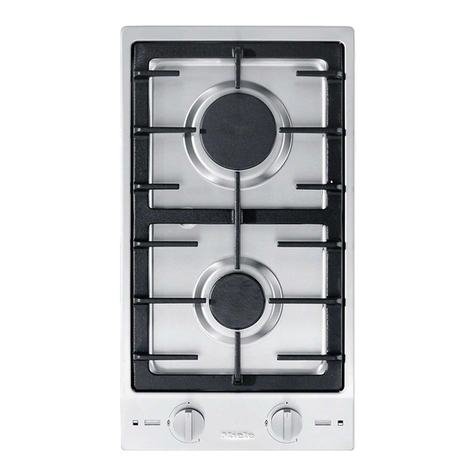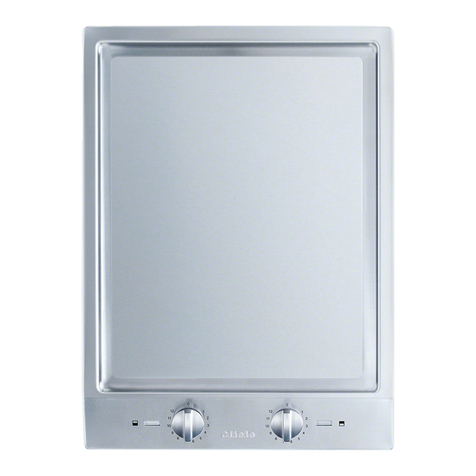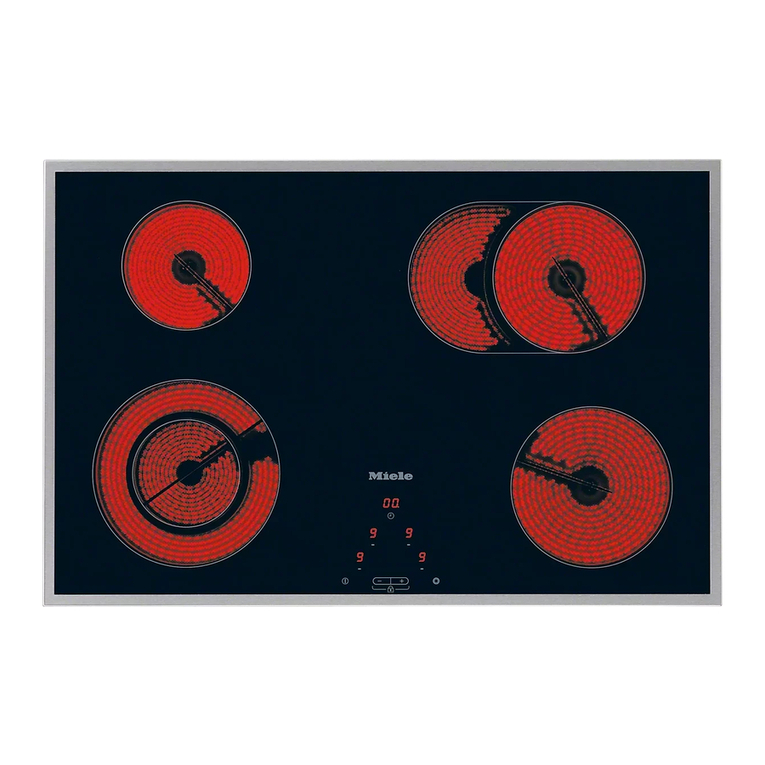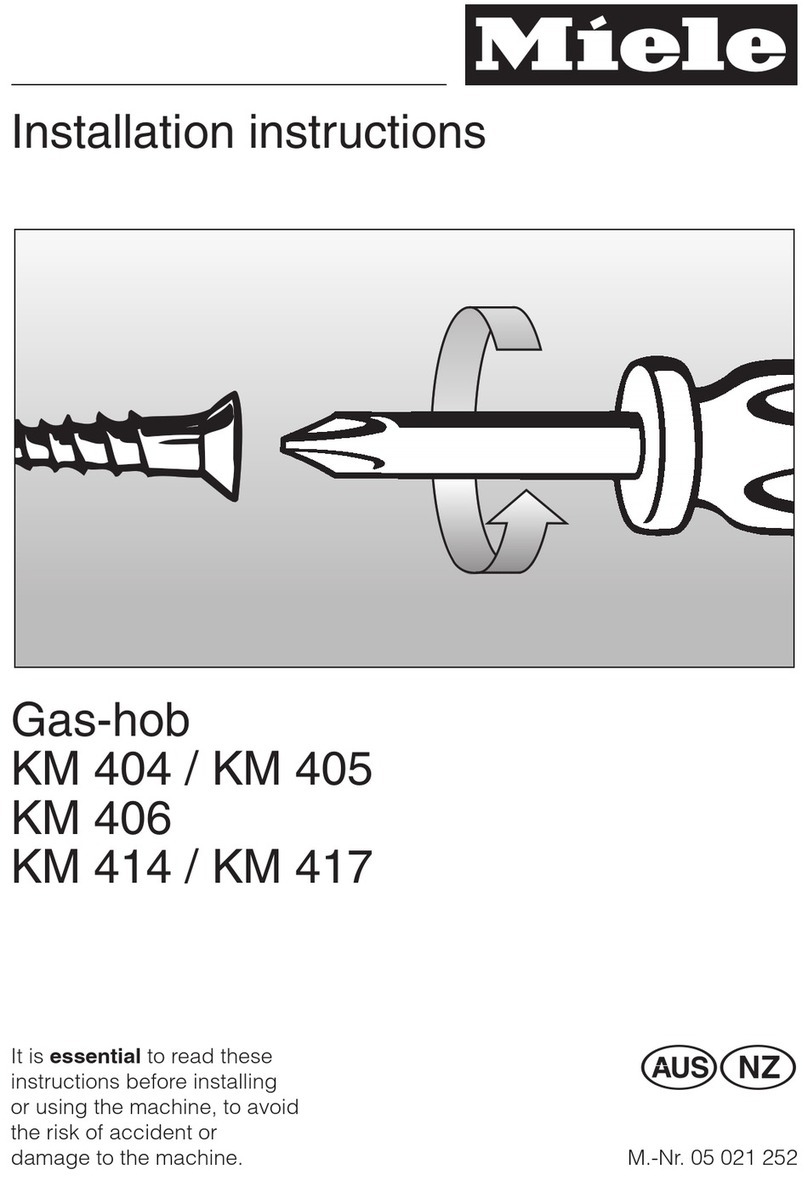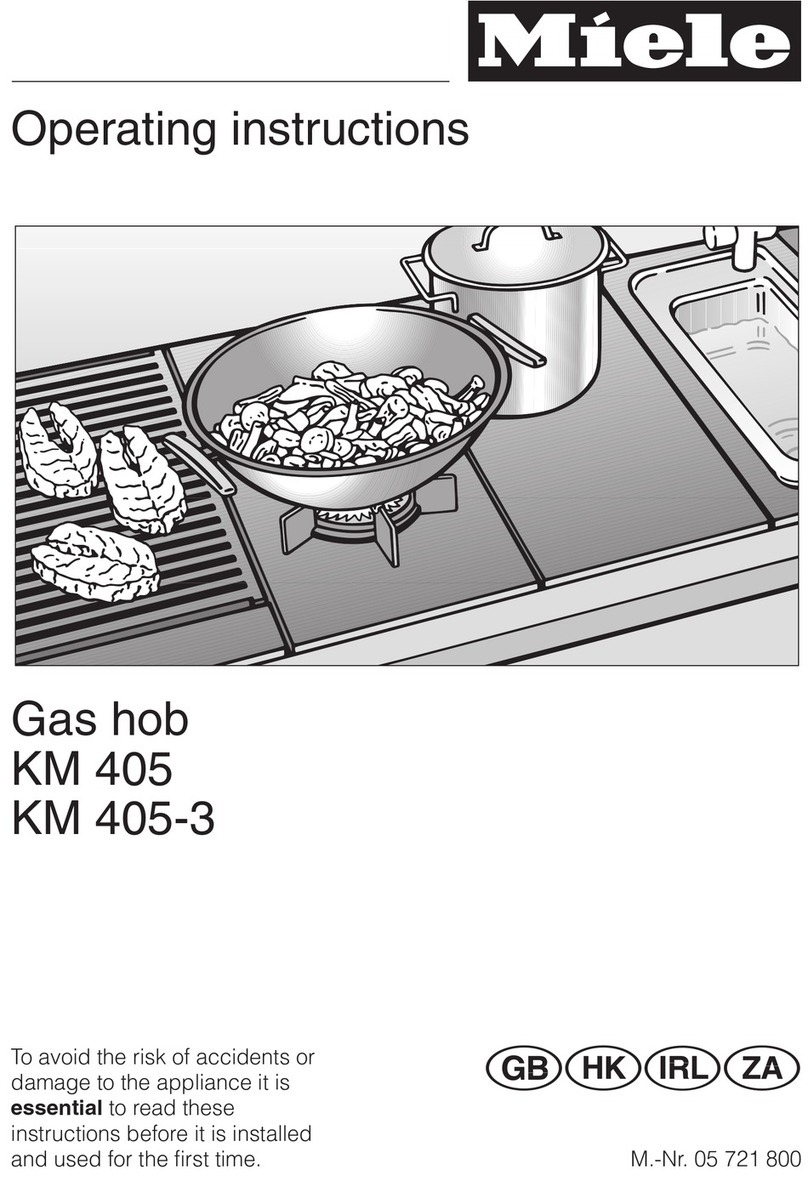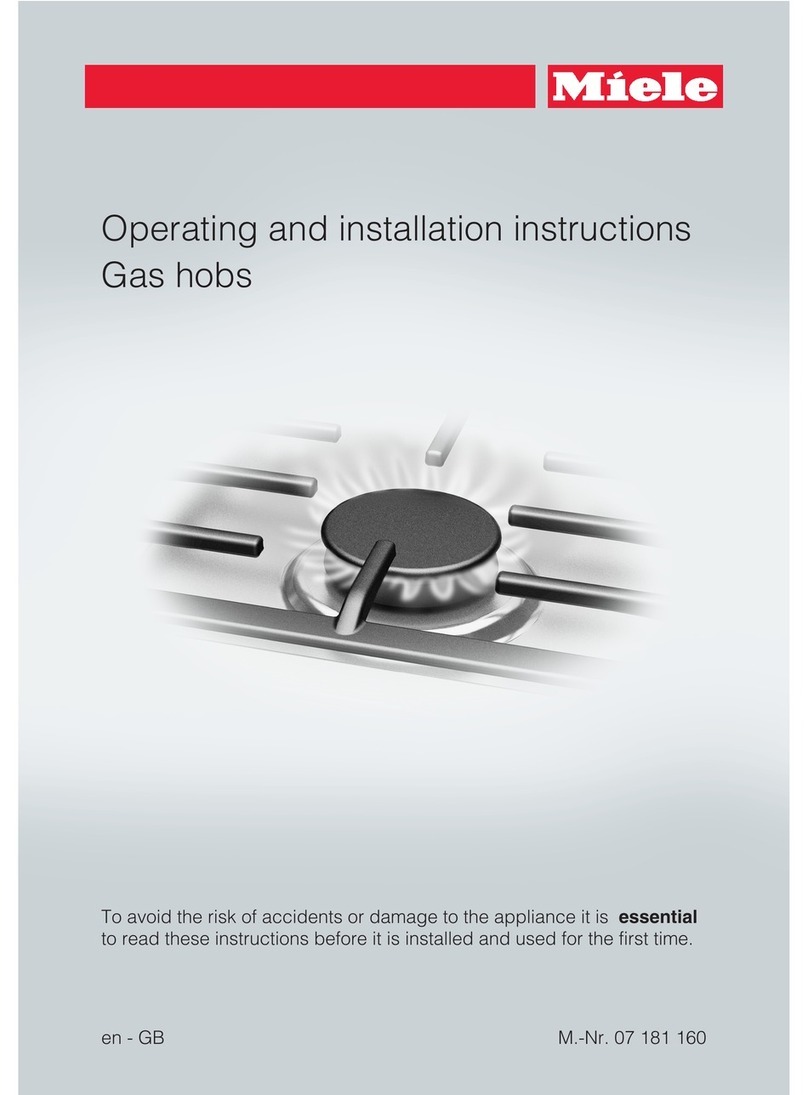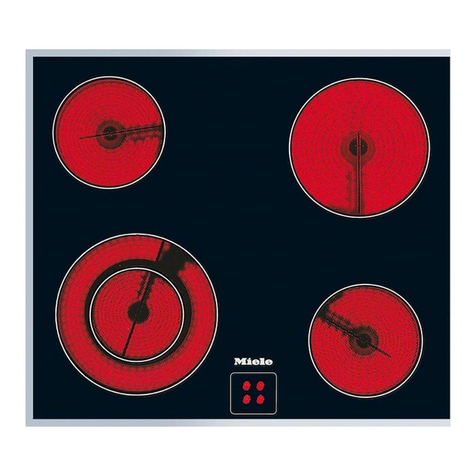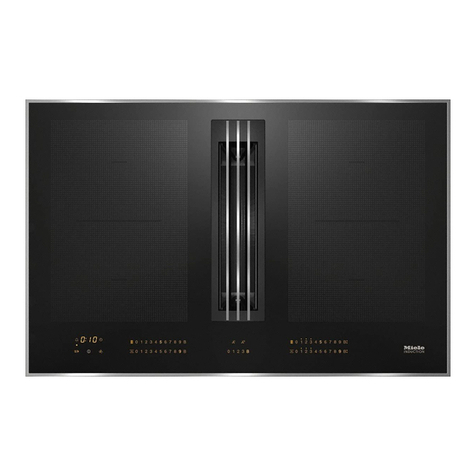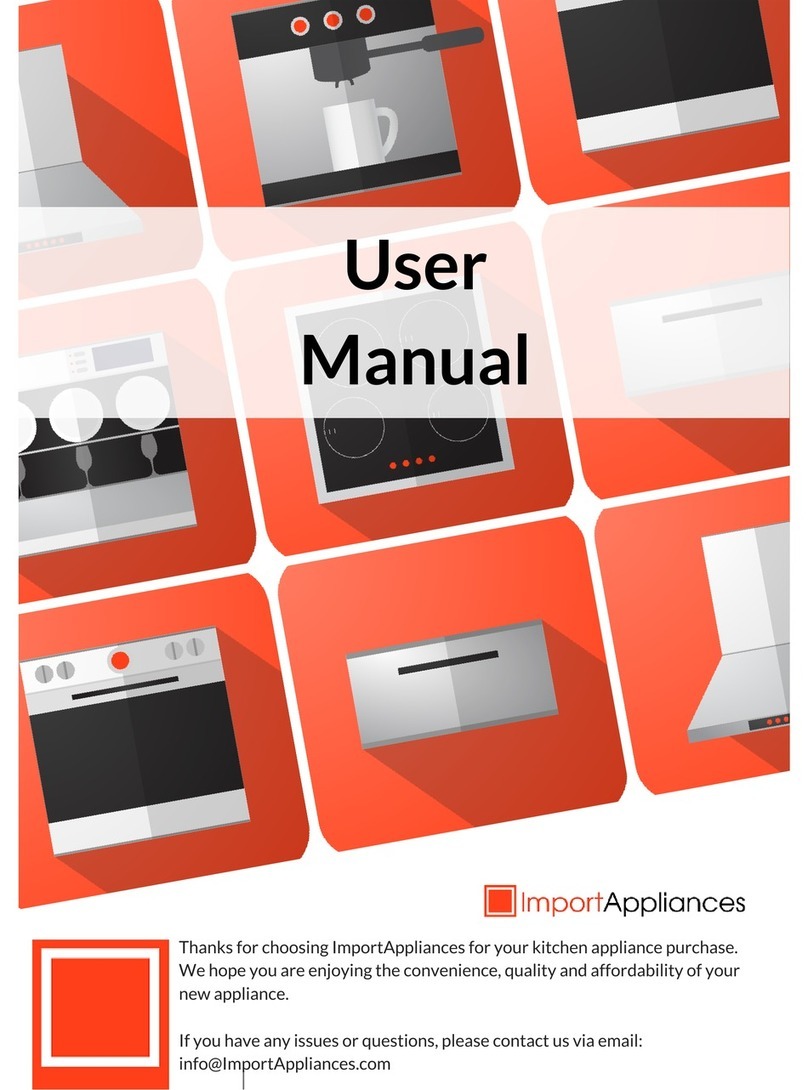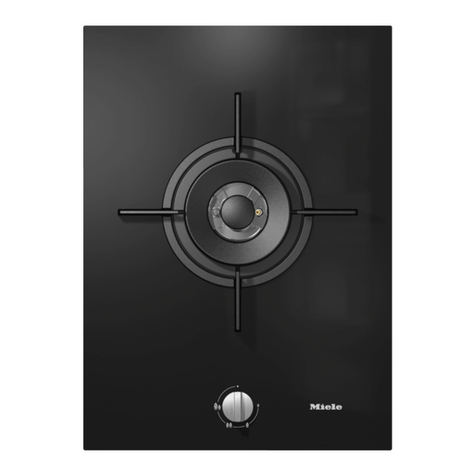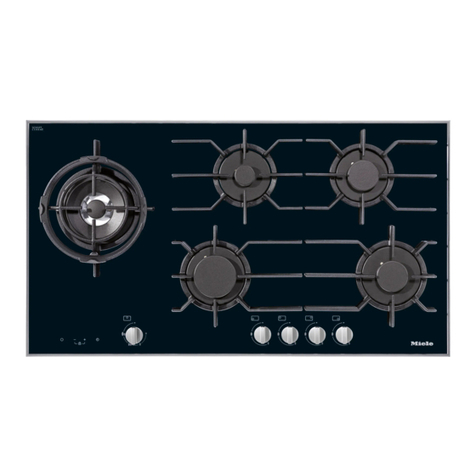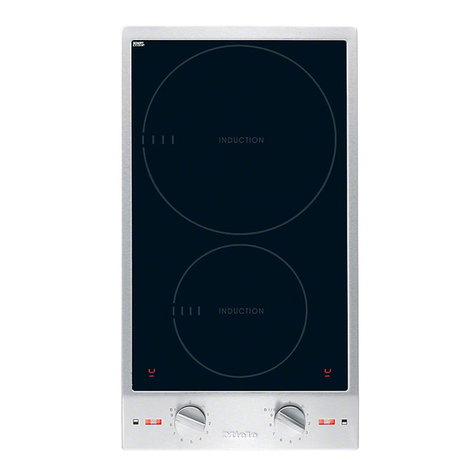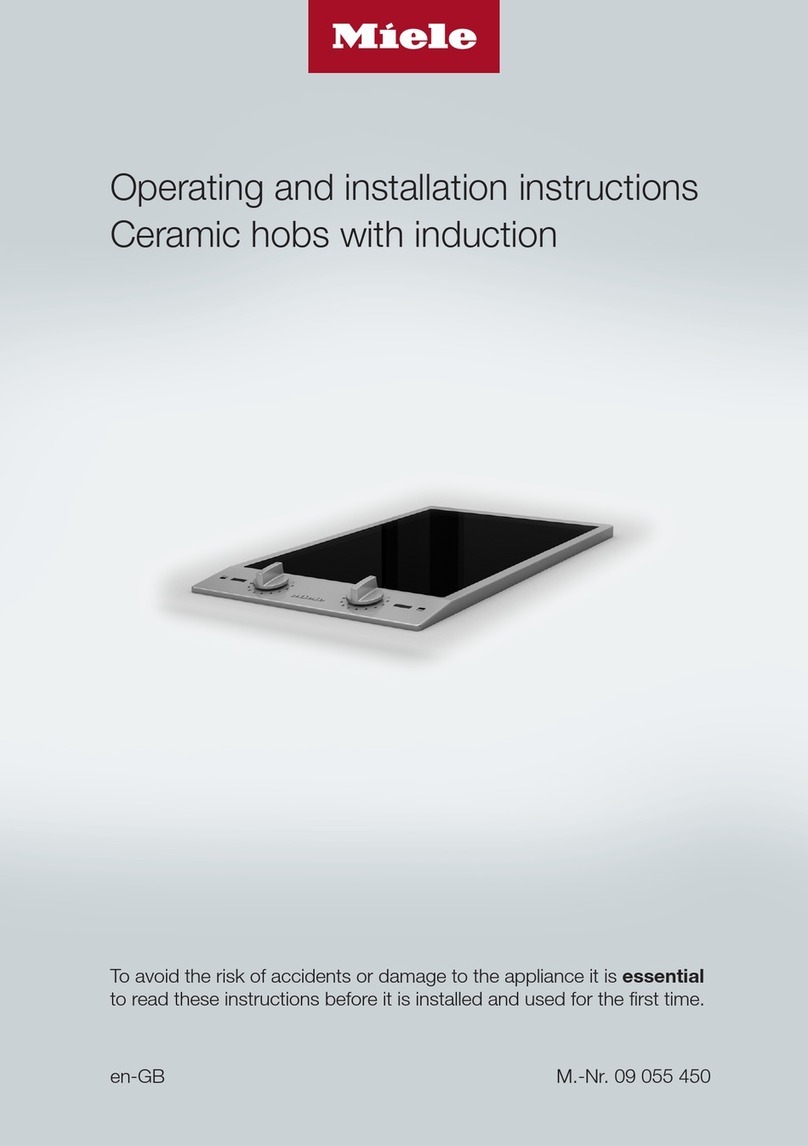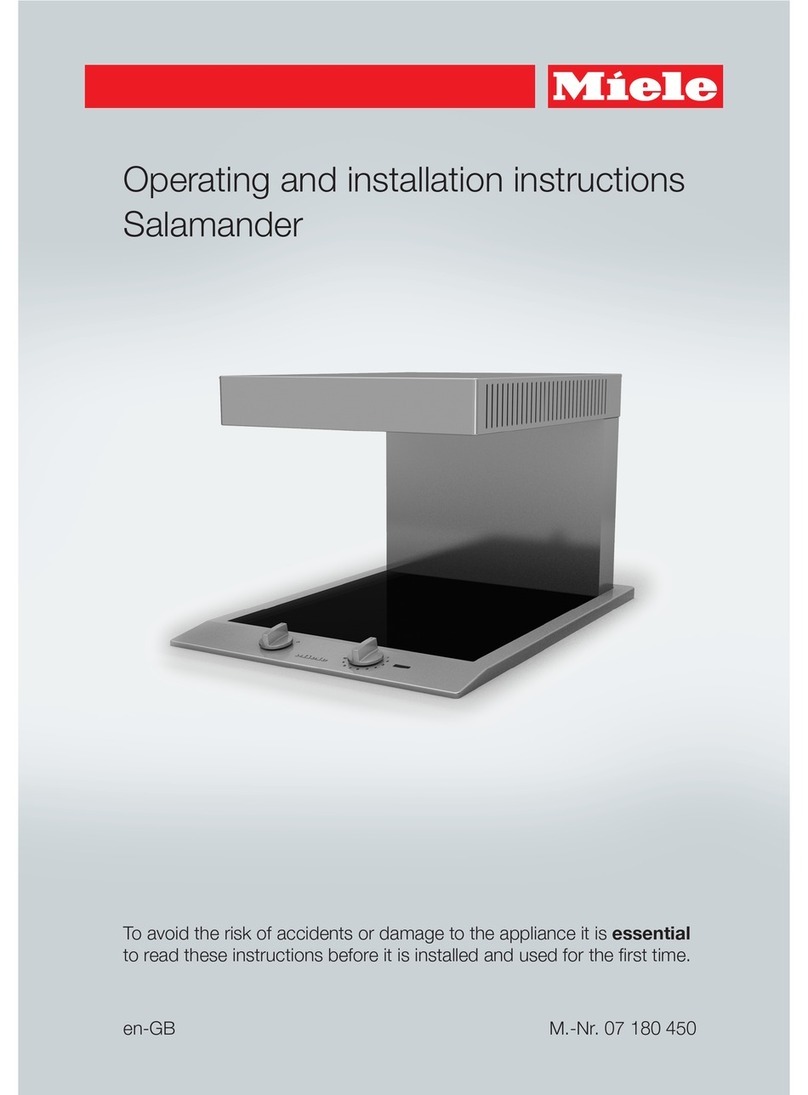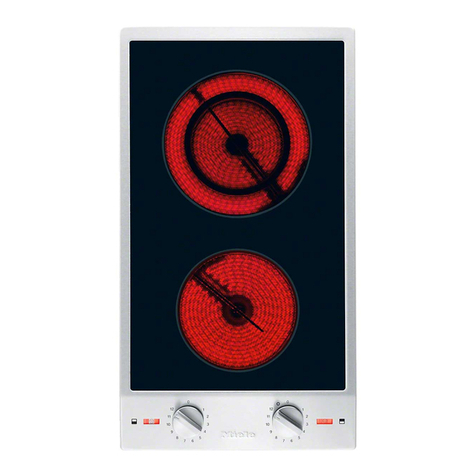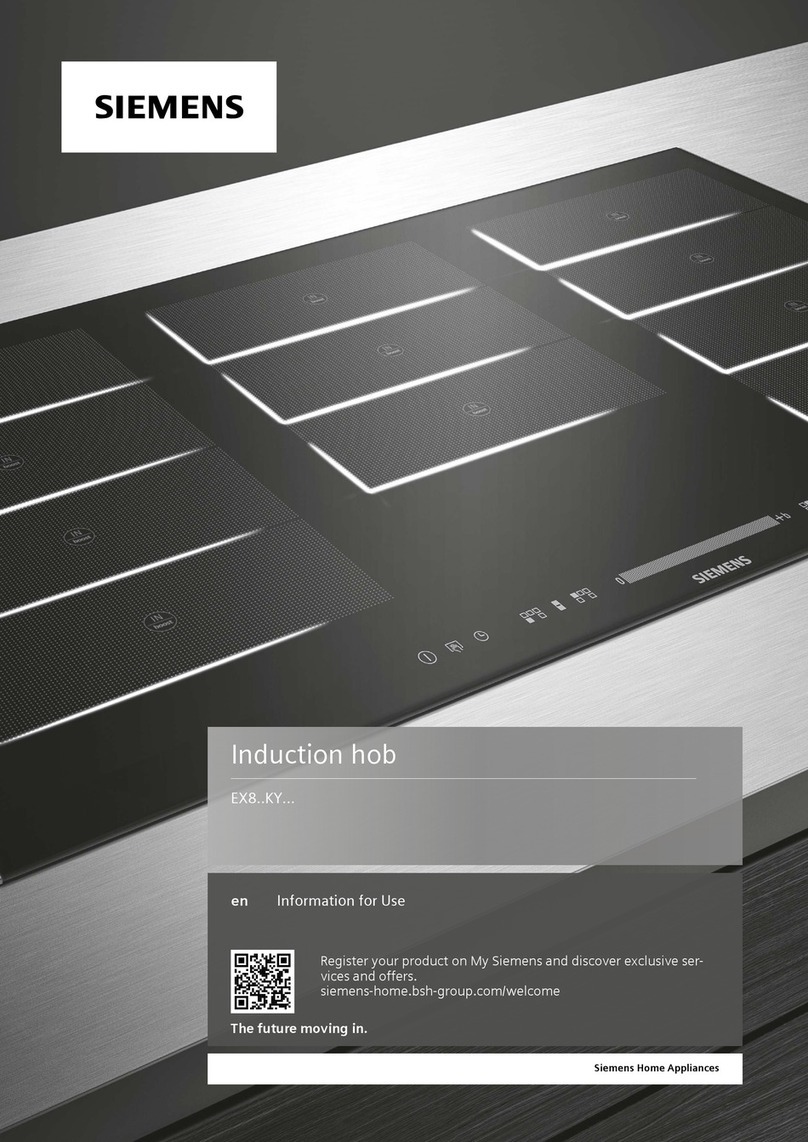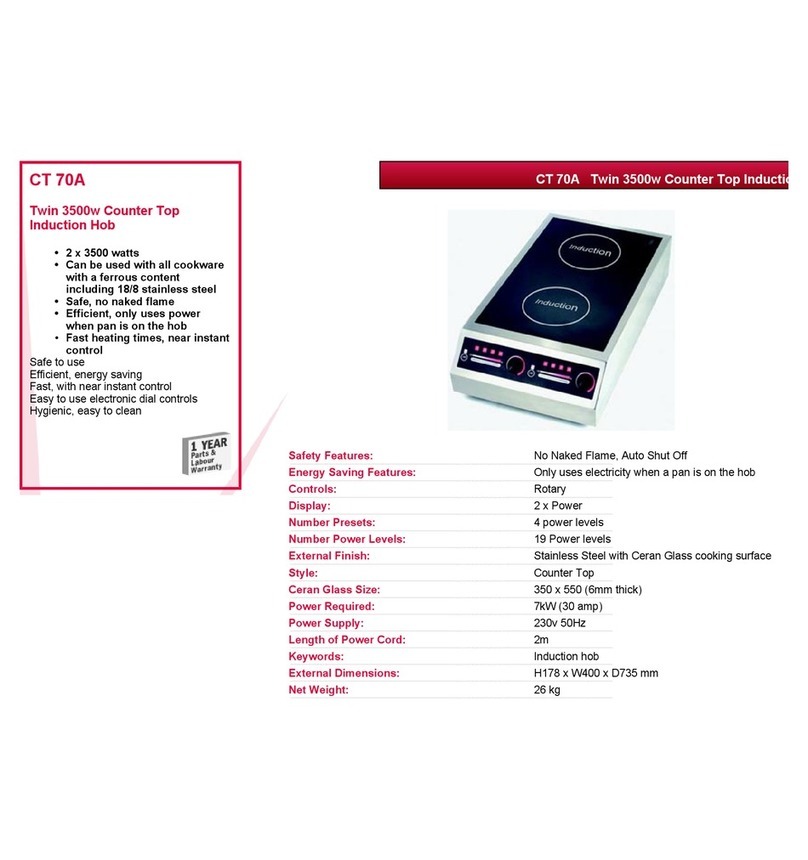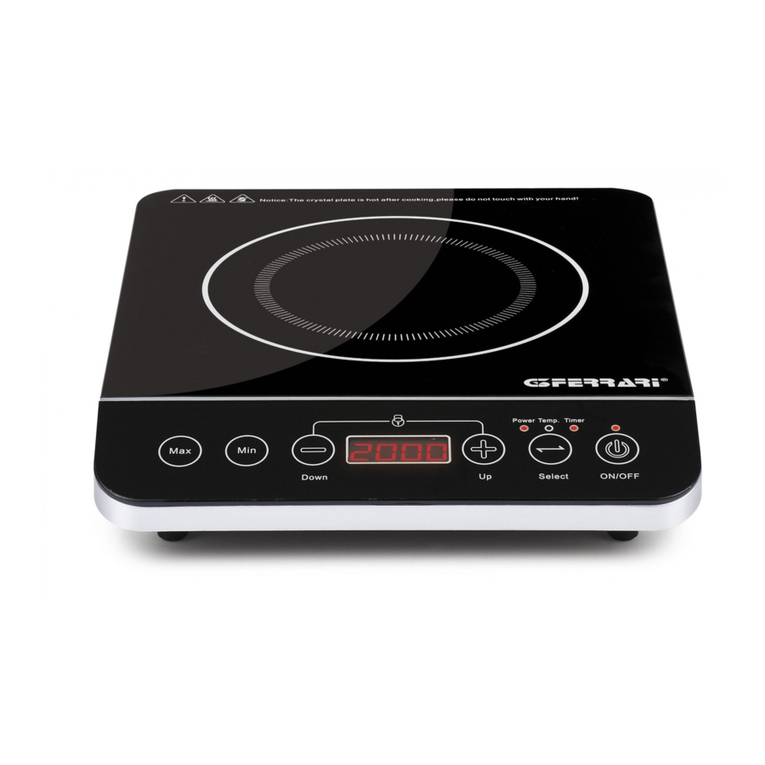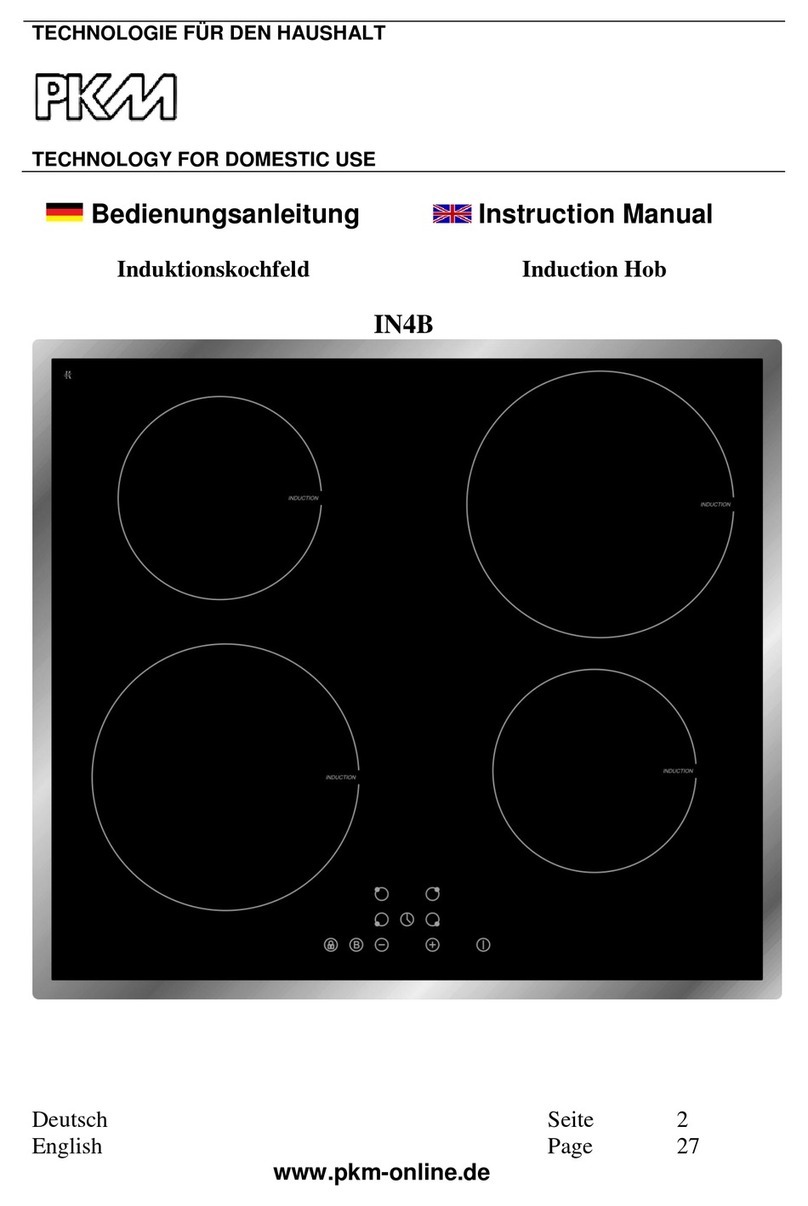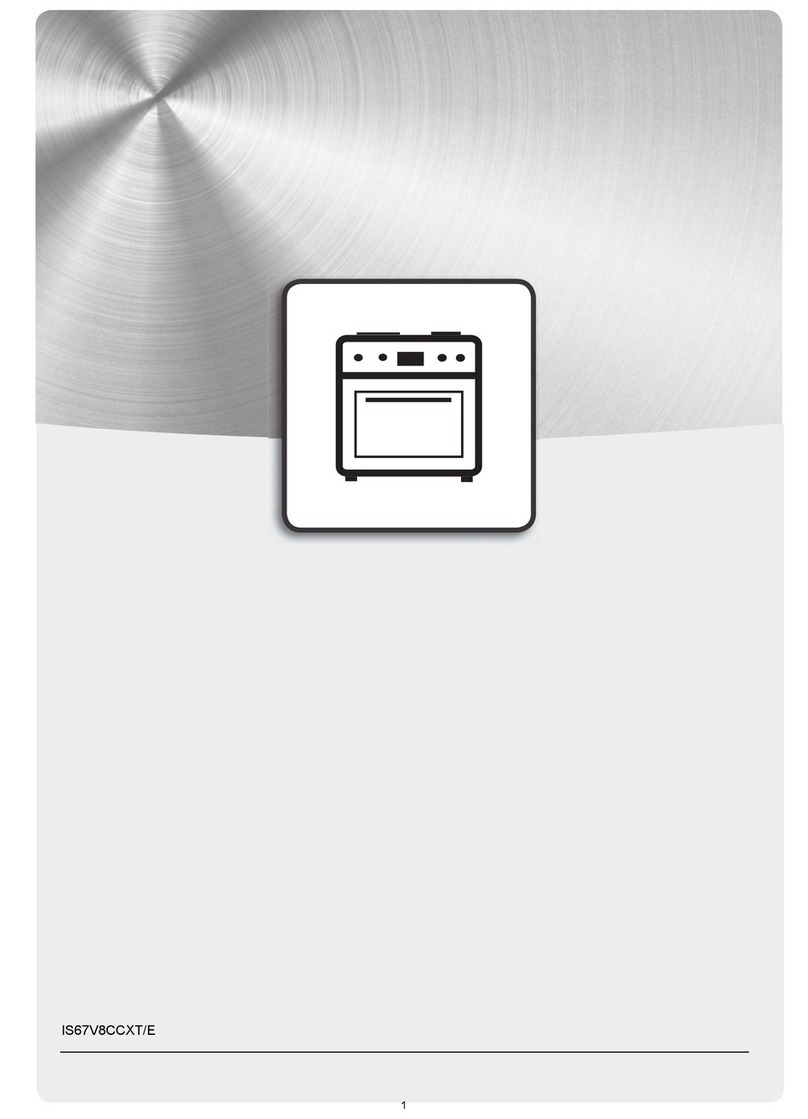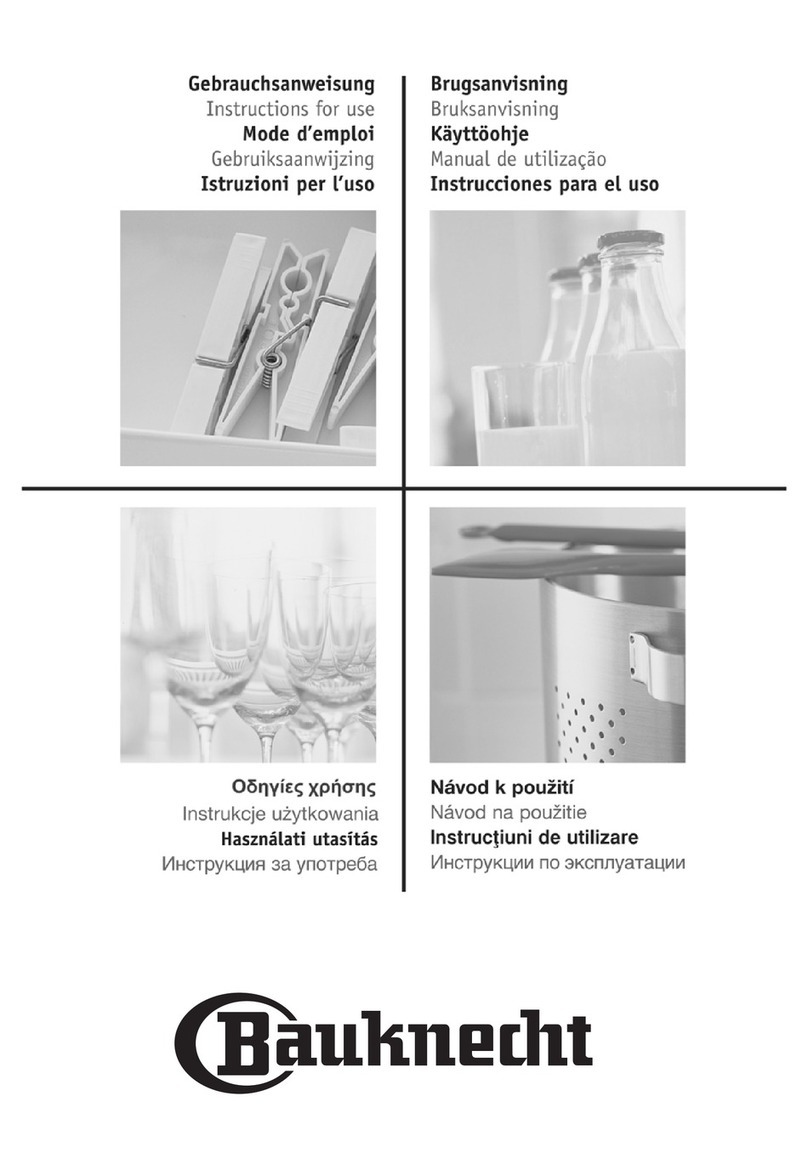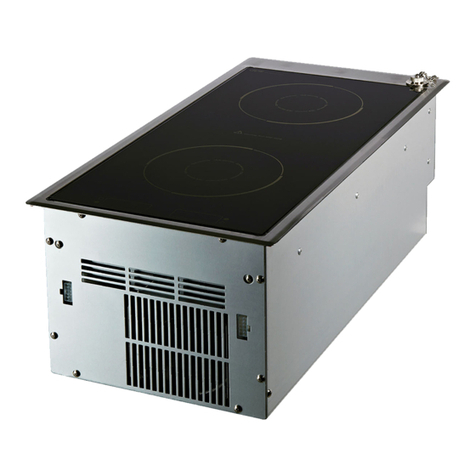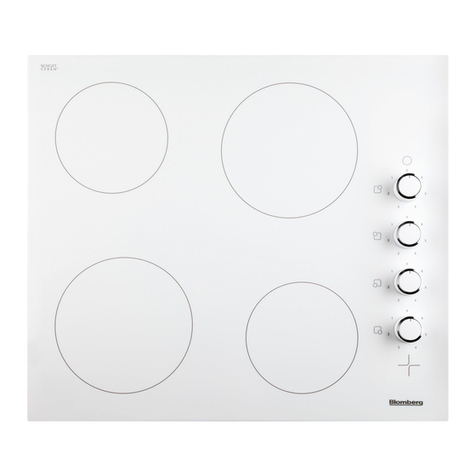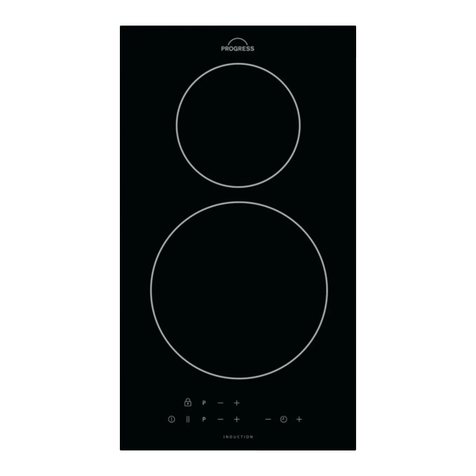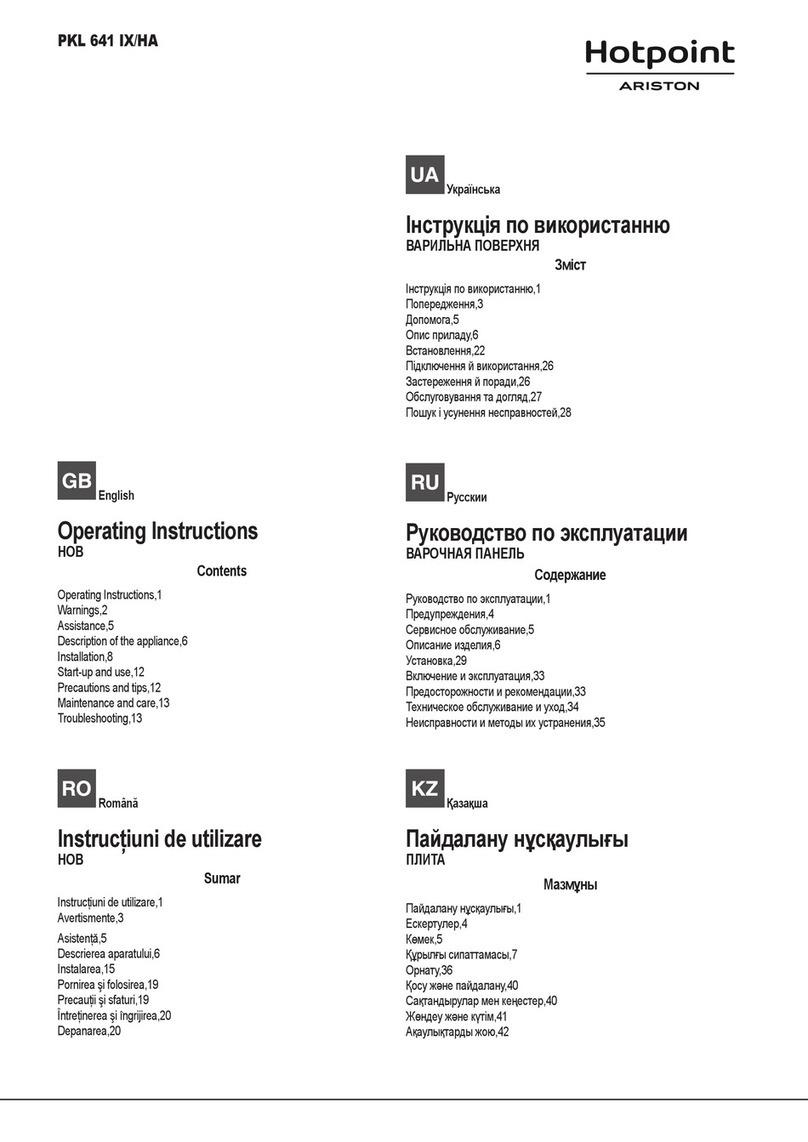The room in which the gas hob is
installed must be at least 20 m3in
size with a door or window in it which
can be opened to the outside air.
Using the gas hob will cause a
build-up of heat and moisture in
the room in which it is installed. Ensure
that the room has sufficient natural or
mechanical means of ventilation, e.g.
an extractor.
If the hob is used for very long
periods of time additional
ventilation of the room may be
necessary, e.g. by opening windows or
doors, or running the extractor on the
highest setting.
The hob may be installed above a
Miele oven, if the work-top is at
least 40 mm thick.
An electric fryer must not be
installed next to a gas hob, as the
gas flames could ignite the fat in the
fryer. It is essential to maintain a
distance of at least 300 mm between
these two appliances.
This gas hob must not be installed
over a dishwasher, washing
machine, tumble dryer, refrigerator or
freezer. The high temperatures radiated
by the hob could damage the
appliance below.
Spray canisters, aerosols and other
inflammable substances should not
be stored in a drawer under the hob.
Cutlery inserts must be heat-resistant.
Safety distance above the appliance
bA minimum safety distance must be
maintained between the appliance
and a cooker hood above it. See the
manufacturer’s operating and
installation instructions for details.
For any flammable objects, e.g.
utensil rails etc. a minimum safety
distance of 760 mm should be
maintained between it and the
appliance below.
All dimensions in this instruction booklet
are given in mm.
Keep these instructions in a safe place
and pass them on to any future
user/owner of the appliance.
Safety instructions
6
